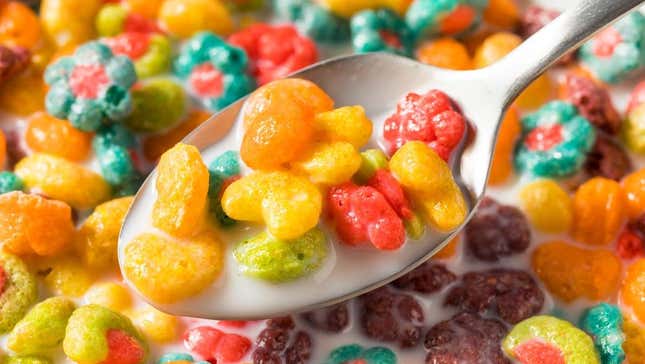
Breakfast may or may not be the most important meal of the day, depending on who you ask. One thing that’s clear, though, is that our breakfast habits are changing in the modern era—and the shift might spell doom for dry cereal, once a staple of the American breakfast table.
The Wall Street Journal reports that sales of breakfast cereal have been falling for quite some time. Although the category actually experienced an uptick in popularity during the pandemic, it was a spike that didn’t last: As the world shifts away from the pandemic-induced lifestyle of never leaving the house, people are opting for more on-the-go breakfast foods such as granola bars, protein shakes, or even fast food breakfast sandwiches. This might be why you’re seeing Kellogg’s just-add-water cereal popping up at convenience stores, positioning itself as a similarly portable option.
“The pendulum has swung with a vengeance away from sugar and carbohydrates and back toward protein,” WSJ notes. Additionally, when families are opting for cereal, they are more open to the generic or private-label brands than they have been in previous years, which yanks market share away from the big brands like General Mills and Post.
“In recent weeks, executives from Kellogg and Post both separately said that they expect the cereal industry to return to its prepandemic trend of gradual decline, with sales ranging from flat to down by a low single-digit percentage a year,” WSJ reports.
One might assume that another big reason for cereal’s dip in popularity is Americans’ greater focus on health and wellness—after all, it’s not exactly a secret that most leading breakfast cereals are laden with excess sugar. However, the nutritional content of cereal doesn’t seem to be a meaningful factor in its decline. Post’s line of Pebbles cereals, including Fruity Pebbles and Cocoa Pebbles, has seen the largest rise in popularity of any cereal since 2019. If anything, the dessert-like nature of these cereals might be why they succeed; WSJ notes that adults will often keep sweet children’s cereals on hand as a guilty pleasure, perhaps contributing to the rise in sales.
I have my own theory as to why cereal is no longer the breakfast behemoth it once was: People just aren’t into milk anymore, and cereal is a collateral casualty. Gen Z doesn’t consume milk the way previous generations have, and newer milk alternatives made from oats and almonds are all the rage. I’ve found that plant-based milks don’t pair quite as well with cereal for two reasons. First, they taste different from traditional cow’s milk, and this affects the taste of your favorite cereal—not always for the better. On top of that, oat and almond milks can be expensive, and I personally don’t want to waste them on cereal if most of the milk is going to be left in the bowl.
The dairy industry has been on an all-out crusade to make milk cool again in the face of all this new competition. In order to keep up with the times, cereal will need to do the same, reminding Americans what they loved about breakfast cereal as kids and why it’s still a worthwhile addition to their morning. Hint: This isn’t it.